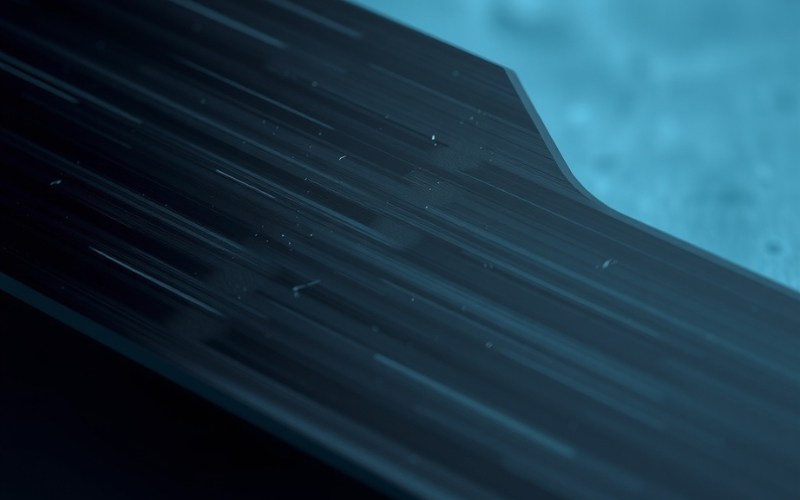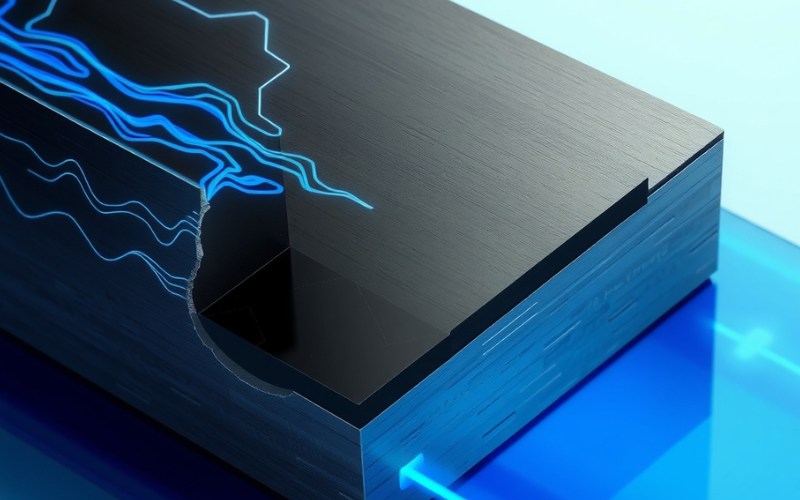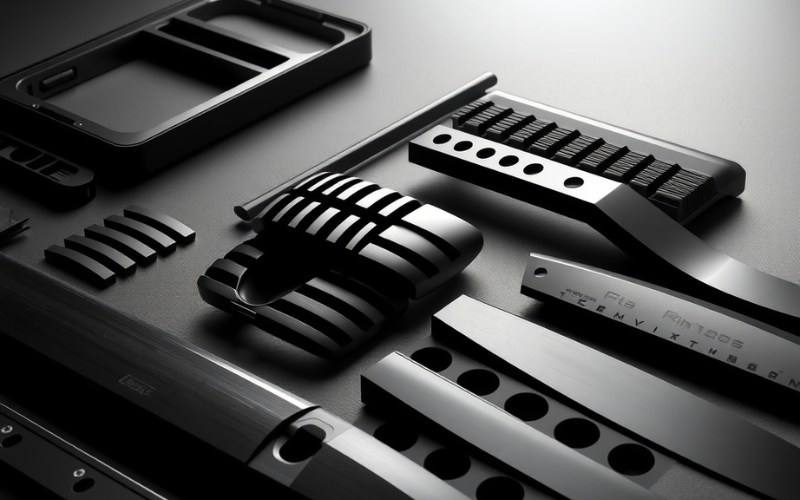Let Istar help you get started on your project with our experience and know-how!
Upload your design files and production requirements and we will get back to you within 30 minutes!

Black anodizing does more than just look good. It also adds a very strong layer of protection to the metal. In this article, I am going to tell you all about black anodizing. We will talk about what it is and how you do it. We will also cover why you might want to use it for your own projects. It does not matter if you are an expert or a beginner. I think you will find this guide useful. I will give you some of my own tips from my experience to help you get the very best results.
So, what is black anodizing? To put it simply, it is a way to create a strong, black, protective layer on top of a metal. This is usually done to aluminum. It is an electrochemical process. This process makes the natural oxide layer on the metal’s surface thicker. This is not just a layer of paint. The black anodize coating is a real part of the metal. This makes it very strong. It is hard to scratch or wear down. If you have ever seen a nice flashlight or the case of a good laptop, you have probably seen black anodized aluminum.
I really like black anodizing because it has so many good points. The anodizing process makes the metal much better at resisting corrosion. This means your parts will last a lot longer. They will last even in tough places. It also gives a nice, even black finish. This can make a product look much better. For me, using black anodize on a project is a sign of good work. It shows you cared enough to make something that not only looks great but is also made to last a long time. The anodizing process creates a surface with tiny holes. These holes can then be filled with dye, which is how we get that deep black color.
I still remember the first time I did black anodizing on a part I made. The change was so cool. The plain aluminum part looked unfinished before. After, it looked like a professional part with a tough, flat black surface. The anodizing made it look better and also feel different. It is a process that makes you feel good about your work and adds real value. That is why I think every person who works with metal should know about it.
The black anodizing process may seem hard, but it is really just a few simple steps. I have listed them here for you. This will help you understand what happens in each part of the process. Anodizing is really about controlling and improving a natural thing that happens: oxidation.
Here is an easy look at the steps:
I have learned from doing this many times that every step is very important for a good black anodize finish. If you rush the cleaning or do not keep the baths at the right temperature, you can get a coating with spots or uneven color. This process is best when you are patient and pay close attention to the details.

If you want to try black anodizing on your own, you will need to get some special tools and supplies. I have made a list of the main things you need to start. It will make the process go better and be safer if you have everything ready before you start.
Main Tools and Supplies:
Getting all the things for black anodizing might seem like it costs a lot at first. But, you can use many of these items again for other projects. After you have your setup, the cost to keep doing it is pretty low. Always remember to be safe when you work with chemicals like sulfuric acid.
Not all anodizing is done the same way. There are different kinds. Each one has its own special features and uses. If you understand these types of anodizing, you can pick the best one for what you need to do. I will talk about the three most common kinds here.
| Anodizing Type | What it is | Common Uses |
|---|---|---|
| Type I – Chromic Acid Anodize | This makes the thinnest anodic coating. It is good at stopping corrosion, but it is not great for dyeing dark colors. | Used in the aerospace field, or as a base for paint. |
| Type II – Sulfuric Acid Anodize | This is the most popular kind of anodizing. It makes a thicker coating than Type I. It is great for dyeing, so you can get many different colors, including a deep black. | Used for building parts, electronics for people, and general aluminum anodizing for business. |
| Type III – Hardcoat Anodize | This makes the thickest and hardest anodic coating. It gives the best protection against wear and corrosion, but it can be harder to dye. | Used for military items, factory machines, cooking pans, and parts that will be in tough places. |
For most of my projects that need a black anodized finish, I use Type II anodizing. It gives a good mix of strength and bright color. I use Type III, which is also called hardcoat anodizing, when I need the most protection from wear for a part that will be used a lot. The kind of anodizing you pick will be based on how the part will be used in the end.
I get this question a lot. The simple answer is that a black anodized finish that is done the right way will not fade easily. But, a few things can change how well the color lasts over time.
The kind of dye you use is very important. Inorganic dyes and metal salts are usually better at holding their color in the light than organic dyes. This means they are less likely to fade when they are in the sun’s UV light. For things that will be used outside, it is very important to use a good dye and to seal it the right way. This makes sure the color will last. If the seal is not good, the dye can slowly come out. This will make it look faded.
In my own work, I have found that a good black anodize job with quality supplies will stay a deep black color for many years. I have parts that I anodized ten years ago. They still look just as good as they did on the first day. The important thing is to not take shortcuts during the anodizing and sealing steps. If you do it the right way, you can expect a very long-lasting and nice-looking black finish.
It is easy to mix up black anodizing with another way to make things black called black oxide coating. They both give a black surface, but they are very different methods with different uses.
The main difference is the materials they are used on. Black anodizing is mostly used for metals that do not have iron, like aluminum, titanium, and magnesium. On the other hand, black oxide coating is used for metals with iron, like steel. You cannot use black oxide on aluminum.
Another big difference is the coating itself. Black anodizing makes a thick, hard oxide layer that is a part of the metal. Black oxide is a chemical coating that makes a much thinner layer of black iron oxide on the surface. Black oxide gives some protection from corrosion. But, it is not as strong or as good at resisting wear as a black anodized finish. I see black oxide as a good choice for adding a black color and some light corrosion protection to steel parts. But for aluminum, black anodizing is the better choice for a strong, high-quality finish.
Just like any way of finishing something, black anodizing has its good points and bad points. I have found that for most of my projects, the good points are much better than the bad points. But it is important to know about both.
Good Points:
Bad Points:
For me, the strength and professional look of a black anodize finish make it the first thing I choose for many aluminum parts. The trick is to pick the right kind of aluminum and to make sure the anodizing is done right. This will help avoid any of the bad points.
When you start to pay attention, you will see black anodized aluminum in many places. It is strong, it resists corrosion, and it looks good. Because of this, it is a popular choice for many different kinds of products.
Here are a few places where black anodized aluminum is used:
I love how many things you can do with black anodized aluminum. It is a finish that looks just as good on a high-tech satellite as it does on a cool new electronic gadget.

Yes, you can definitely do black anodizing at home. If you have the right supplies and you focus on being safe, it is a project you can do yourself. I have done it many times in my own shop.
The main steps are the same as what companies do, but you will do it on a smaller scale. You will need to set up a place for cleaning, a tank for anodizing with a sulfuric acid electrolyte, a bath for the dye, and a bath for sealing. It is very important to work in a place with good airflow. You also need to wear the right safety gear, like gloves, glasses, and a breathing mask.
You can find many good videos and guides on the internet that show you how to do it, step by step. I would suggest you start with some small, easy parts. This will help you learn the process before you work on bigger or harder pieces. It might take a few tries to get the look you want. But feeling proud of making a professional-looking black anodized finish in your own home is worth the work.
If you do not want to do black anodizing yourself, that is okay. Or, if you have a lot of parts that need to be finished, there are many companies that offer professional surface finish services. These companies have the special tools and knowledge to give you a great and even black anodize finish.
You can do a quick search online for “black anodizing services near me.” You will probably find a few choices close to you. When you pick a company, I suggest you find one that has worked with the same kind of aluminum you are using. It is also a smart idea to ask to see some of their work. This will help you make sure their quality is good enough for you.
Using a professional service will cost more than doing it yourself. But, it can be a great choice for projects where you need the finish to be perfect. They can also finish a lot of parts much faster than you could at home.
To finish up, here are the most important things to remember about black anodizing: